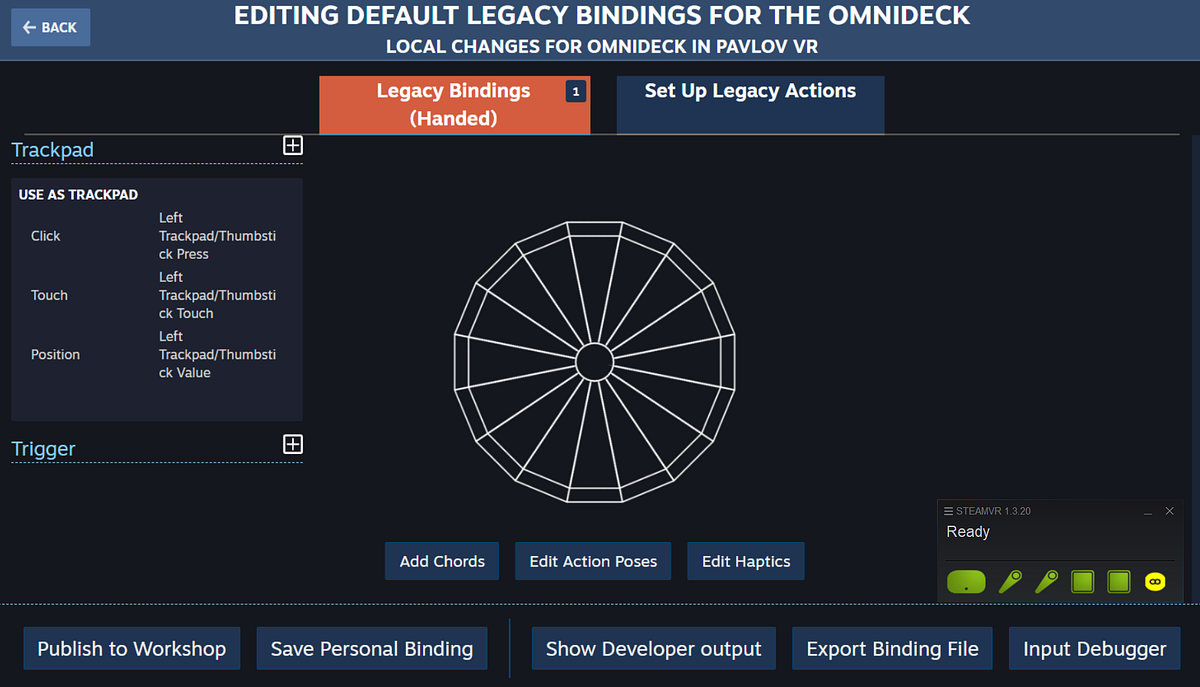

- PANO2VR TO OPENVR DRIVERS
- PANO2VR TO OPENVR DRIVER
- PANO2VR TO OPENVR SKIN
- PANO2VR TO OPENVR SOFTWARE
Pano2VR natively supports stereo images and videos.

PANO2VR TO OPENVR SKIN
The VR button you’ve added to the skin will only be visible on WebXR supported browsers. In the Web output settings, check that Enabled is selected in the VR pane. Or make your own by adding the Enter VR action to your button (Mouse Click > Fullscreen/VR > Enter VR). If you’d like to use the buttons from the version 7 skins, you can create a component from their EnterVR buttons. These buttons will be from version 6 skins silhouette and simplex.

The output will work for Cardboard, Oculus, and other headsets with browsers that support WebXR.Īdd the Enter VR component from the Components Toolbox. (You may have to save the project first.) Select Enabled.Ĭhoose one of the built-in skins ( feather_vr.ggsk or venis_vr.ggsk). In the Output Settings, find the VR pane. On an iPhone go to Settings > Safari > Clear History and Website Data.Īdd a built-in skin. If the gyroscope is not working, and you’re using a secure server, then try clearing website data. On first launch, you should get an opportunity give permission. ★ Mobile phones require permission to be granted to use the Gyroscope and Accelerometer. ★ The project must be hosted on a secure server (HTTPS) in order to use the phone’s gyroscope which is needed for viewing. New in version 7 is the use of a separate skin for VR. All built-in skins have an Enter VR button. Alternatively, you can use the Package Viewer app for offline WebXR viewing. If a skin isn’t used, tour node hotspots will be visible as spinning 3D globes but can be changed using custom hotspot images.įor white label and offline app creation, we recommend using VR Tourviewer. In Pano2VR version 7, all Point Hotspots are supported except for PDF, URL, and YouTube/Vimeo hotspots. "Vibrate the controller" is now a single command that works for all devices, it might look something like OpenVR.VibrateController(), and no matter what controller you have it will just work.Pano2VR projects can be viewed in a head mounted display or VR headset either with through WebXR, Cardboard, or VRTourviewer. They assume you have some OpenVR-compatible device, and write their application such that it works with this abstract headset. Now, application & game developers don't have to worry about what specific headset or set of controllers you have. This creation is called an implementation of OpenVR, or OpenVR runtime - e.g. That means, they fill in the "how to do it" part, unique to their respective hardware. They say: "this is what you should do" - but not "how to do it".Īny hardware manufacturer is encouraged to implement these header files. Header files include some code, but they're pretty barebones. The Oculus Runtime then talks directly to the HMD and tracking system.
PANO2VR TO OPENVR SOFTWARE
Oculus only have one API, for games & software to talk to THING, which in this case is the Oculus Runtime. This is different from how the Oculus API works. When you use the Rift (or any other HMD) with SteamVR, tracking, sensor fusion, etc, needs to be performed by the other HMD drivers, and SteamVR is basically acting as a lowest-common-featureset protocol translator.
PANO2VR TO OPENVR DRIVERS
All that occurs inside SteamVR, which has the Vive & Lighthouse drivers rolled into it. For the Vive, that second API, between THING and a driver(s), does not exist. Why is this important? Because SteamVR behaves differently with the Vive & Lighthouse than with any other HMD. The driver, not SteamVR itself, handles the business of sending images to the HMD, and trackig any tracked objects, including processing any optical or magnetic tracking data performing Sensor Fusion, etc.
PANO2VR TO OPENVR DRIVER
But it's actually two APIs: one for games (and other applications) to talk to THING, and one for THING to talk to the driver for a HMD or other device. OpenVR is an API to allow software to talk to other software. OpenVR is not a piece of software in itself.


 0 kommentar(er)
0 kommentar(er)
